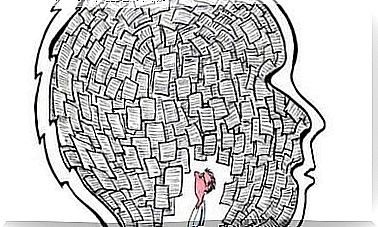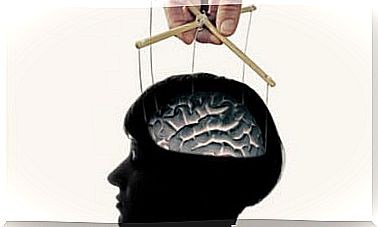The Destigmatization Of Mental Illnesses

There is a wide variety of myths and misconceptions about psychological wellbeing. In order to shed light on this darkness, the destigmatization of mental illnesses is necessary. Once the stigma and associated possible myths are removed, we will gain a different point of view, a healthier and better understanding, free from prejudice.
It is an approach that abandons mental health from a pathological perspective. In other words, he refuses to highlight the disease and its negative aspects. This requires a completely new approach to the situation.
Below we explain what destigmatizing mental illness is, who are the key players in this process, what challenges must be overcome to dispel the myths, and finally, how we promote destigmatization.
Destigmatizing Mental Illness: What is it?
The destigmatization of mental illness requires the acceptance of a new perspective and the dismantling of prejudices and discriminatory attitudes. Basically, it’s about seeing and understanding mental health in a different way. To speak of destigmatization therefore means emphasizing what mental health really means, while at the same time recognizing the disorders associated with it from different perspectives.

Origin of the stigma of mental illness
The stigma of mental illness has evolved over time and is centuries old. It is the result of fears and stereotypes that have combined to discriminate and classify people who are not in the best of mental health.
Since ancient times, mental illnesses have been addressed differently from physical ones. In some cases they were perceived as something negative – in the Middle Ages, for example, they were associated with the demonic – and in others as something positive, with the genius of a person, as in the time of the avant-garde. So the understanding of mental health changed in the historical context.
It is important to remember that one of the consequences of stigmatizing mental illness has been the marginalization of those who suffered it. In addition, physical health has always been seen as more important than mental health.
Gradually, however, connections between psychological aspects and physical problems were discovered and the importance of the former increasingly recognized. Today the World Health Organization defines health as mental, social and physical well-being.
In light of this, various health care institutions have a responsibility to convey the importance of mental wellbeing as a fundamental part of human health. However, despite all efforts, the stigma persists.
Challenges in destigmatizing mental illness
In order to take away the stigma of mental illnesses, let us first expose some misconceptions:
- People with mental disorders would be aggressive, unstable, or dangerous. While mental disorders affect our behavior, emotions, and thinking, not everyone with a mental disorder has these characteristics. Sufferers can go through periods when these characteristics are evident, but that is not something that would happen all the time, with all disorders or with all people.
- The patient would be his illness. Often a person is referred to as an illness and it then appears as if it were his identity because others only perceive him in this context. They don’t look beyond depression or schizophrenia and interact based on what they know about the diagnosis.
- Mental health would be less important. Health has a multidimensional nature. If we pay attention to each of its components and strive to be strengthened, we will move closer to a higher quality of life.
- Mental health would have no effect on physical. Different aspects of mental health can affect physical health as the two are closely related. The clearest example is stress.
- All mentally ill people would be geniuses. This myth dates from the time when madness was recognized as the origin of an author’s genius. This is not the case, however, since every person is different and there are those who are geniuses and those who are not – among sick and healthy people.
As we can see, these myths – all out of ignorance – can lead to social discrimination, either because the idea that people with mental illness should be feared is perpetuated or because it is believed that mental health is not important.
So when we implement prevention and promotion campaigns for mental health, it becomes much easier to break these myths and thus cause the destigmatization of mental illnesses. For this we have to do the following:
- Empathy. Putting ourselves in the other person’s shoes will help us understand what that person is like and not get carried away by stereotypes and prejudices.
- Understand. Looking beyond what we originally thought, being open to new perspectives on health and trying to understand how the mind works will make it easier for us to develop a new way of looking at it.
- Teamwork. Through group work done in different disciplines, we will get closer to the idea of health from a multidimensional, not just physical, perspective.
The greatest challenges are to see people with mental illness as normal people without associating them with danger per se. We must further understand that health is a global concept in which various factors interact, none of which should be excluded. In addition, it is about avoiding being infected with prejudice and helping to drive these myths out of our consciousness.

Mental health destigmatization factors
In order for a real destigmatization of mental illnesses to occur, various factors must be taken into account:
- Affected people and their families: understand the promotion of mental health as a matter for all and clear up misconceptions
- Society: Run campaigns to prevent and promote mental health, implement appropriate strategies, and work in community to understand the problem
- Mental health professionals: explaining mental health for what it really is
How can the destigmatization of mental illnesses be promoted?
In order to reduce the stigma of mental illness and eventually achieve a situation of destigma, it is necessary to work in different fields.
In this context, López et al . In their article published in the Revista de la Asociación Española de Neuropsiquiatría , unfortunately only available in Spanish so far, suggest “a complex strategy for a complex problem” or, what is the same, through interventions in :
- To the media: With the aim of looking at the concept of mental health from a more realistic and positive perspective and conveying this perspective to as many people as possible
- Integrative attention to the person, from different systems, and the emphasis on everything that is synonymous with health for people
- Diagnoses: Promote the use of diagnosis categories so as not to fall back on popular science labels
- Support, contact and social interaction: clearing up myths and treating people with mental illness appropriately
- Health Care: Establish an effective health care system that promotes health and prevents mental illness
- Legal action: confront discrimination and violence related to mental illness
Even if the use of guidelines and the assertive communication of information are important, these measures alone do not guarantee sustainable change. Hence , the support and understanding needed to end this situation must come from individual members of society. From me. From you. From all. Destigmatizing mental health is a matter that affects us all.









